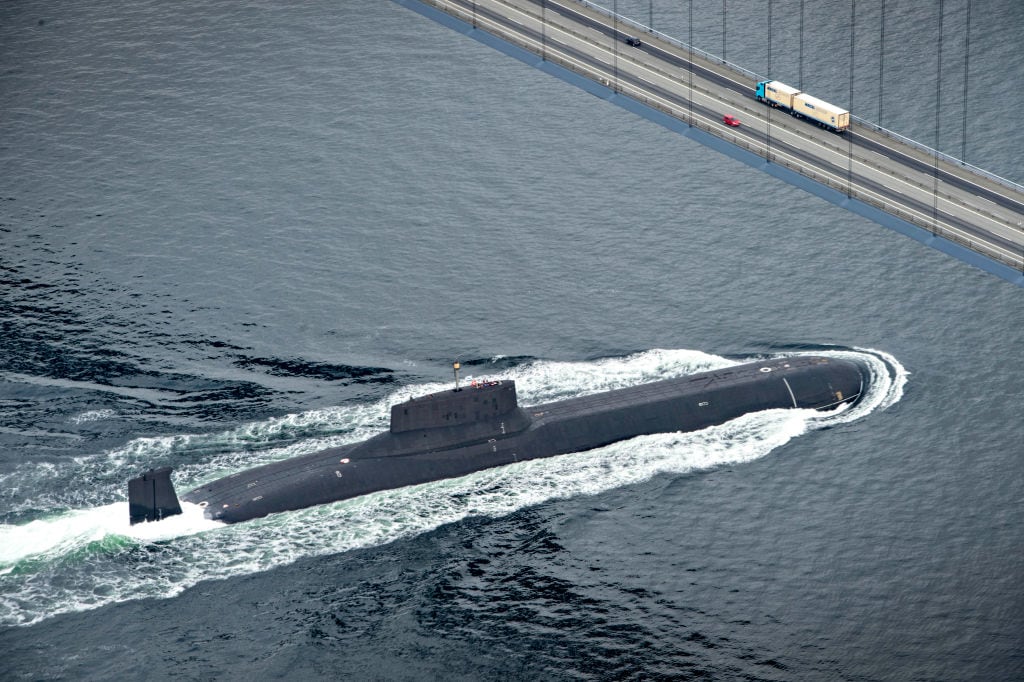MOSCOW ― On Feb. 12, the Russian Defence Ministry posted a video on its website showing the white desolation of the Kazakh steppes in winter. Suddenly, a bright red and grey plume erupted from the snow and arced away from the camera, off into the horizon. Details were scant, but the video claimed to show the successful test of a new Russian ballistic missile interceptor.
The interceptor was launched from the Sary-Shagan test site in Kazakhstan, which Russia leases. In a ministry statement, the deputy commander of Russia’s air defense forces, Col. Andrei Prikhodko, describes the system as a “new modernized anti-missile system” that completed its assigned tasks with “the specified accuracy.”
Little is known about the system, but it is possibly an upgrade of the Soviet-era A-135 missile defense system. The Defence Ministry didn't name the system shown in the test, but earlier proposed upgrades to the A-135 system were known as the A-235. The Defence Ministry claims the interceptor tested earlier this month has longer range, higher reach and more accuracy than current interceptors.
“It seems Russia has a program that will upgrade the current A-135 defense around Moscow,” said Pavel Podvig, an expert on Russia’s strategic nuclear forces. “The new interceptor that we’ve seen is probably part of this effort. But I would seriously doubt it would provide a radically new capability. My guess is that it is just an upgrade, not a new interceptor.”
The most interesting feature of Russia’s missile defense system, at least to Americans familiar with their government’s recent efforts to field effective ballistic missile defense systems, is that Russian missile interceptors are armed with low-yield nuclear warheads. There is some debate over whether or not the warheads are always loaded, or whether they are in storage.
RELATED

“It is hard to tell whether or not this is the case,” Podvig said. “This doesn’t mean Russia relies on hit-to-kill or a conventional warhead, but it is possible the plan is to load nuclear warheads only when things are getting close to serious confrontation.”
And, Podvig noted, there is precedent: the Soviet predecessor A-35 anti-ballistic missile system was managed this way.
The nuclear approach is vastly different to the path chosen by the United States in the 1980s, which has focused exclusively on so-called conventional hit-to-kill missile interceptors — as well as some flirtation with lasers. The latest iteration of American ballistic missile defense is the Ground-based Midcourse Defense system in Alaska, which is designed to protect the entire United States from ICBM attacks.
The Ground-based Midcourse Defense system has been a controversial project, largely due to failures — though there have been some promising successes in recent years.
Proponents of the project claim the U.S. government has a responsibility to perfect the system. Opponents decry its cost, note its skittish performance and question the system’s potential utility. The GMD system is soon due for upgrades that advocates claim will address failures and expand its capabilities.
Russia has never shown great enthusiasm for missile defense. In the Soviet Union, missile defense efforts were pushed on the military by the defense industry, Podvig explained.
“The role of missile defense was never clearly defined. It was a system in search of a mission,” Podvig said. “In any event, everyone I’ve talked to in Russia (including those building missile defense systems) were quite skeptical (or, I would say, realistic) about the capability that [missile defense] can provide.”
But Russia’s capabilities are arguably more effective, in certain regards, than their American counterparts. While the U.S. continues to obsess over reliably solving the physics problems of hitting a bullet with a smaller bullet, Russia is playing “Asteroids” — the classic arcade game. No need to be precise: Just get an interceptor close enough and detonate a small nuke.
And this approach is not something that Russia is pursuing for blanket coverage of its massive territory. Virtually all of Russia’s intercept capabilities are focused on Moscow, the beating heart of a strongly centralized social and political structure. Not too much is known about these defenses, but a line of nuclear-tipped interceptors is said to circle the city.
The fact that the interceptors are nuclear-tipped is rarely, if ever, explicitly mentioned in official statements and literature in Russia. While Russia may be interested in conventional hit-to-kill intercepts in the future, for now it will remain nuclear.
“[We] have to rely on less fancy stuff that gets the job done, thus the nukes. But folks are aware we would be blinded from the [electromagnetic pulse] once you detonate the interceptor,” said Vladimir Frolov, a Russian international affairs analyst. “So they are investing in ways to either minimize the yield or dispense with the nukes for a conventional proximity fragmentation warhead.”
But that would require an accuracy Russia has yet to demonstrate, and with which the U.S. continues to struggle.
Matthew Bodner covered Russian affairs for Defense News.







